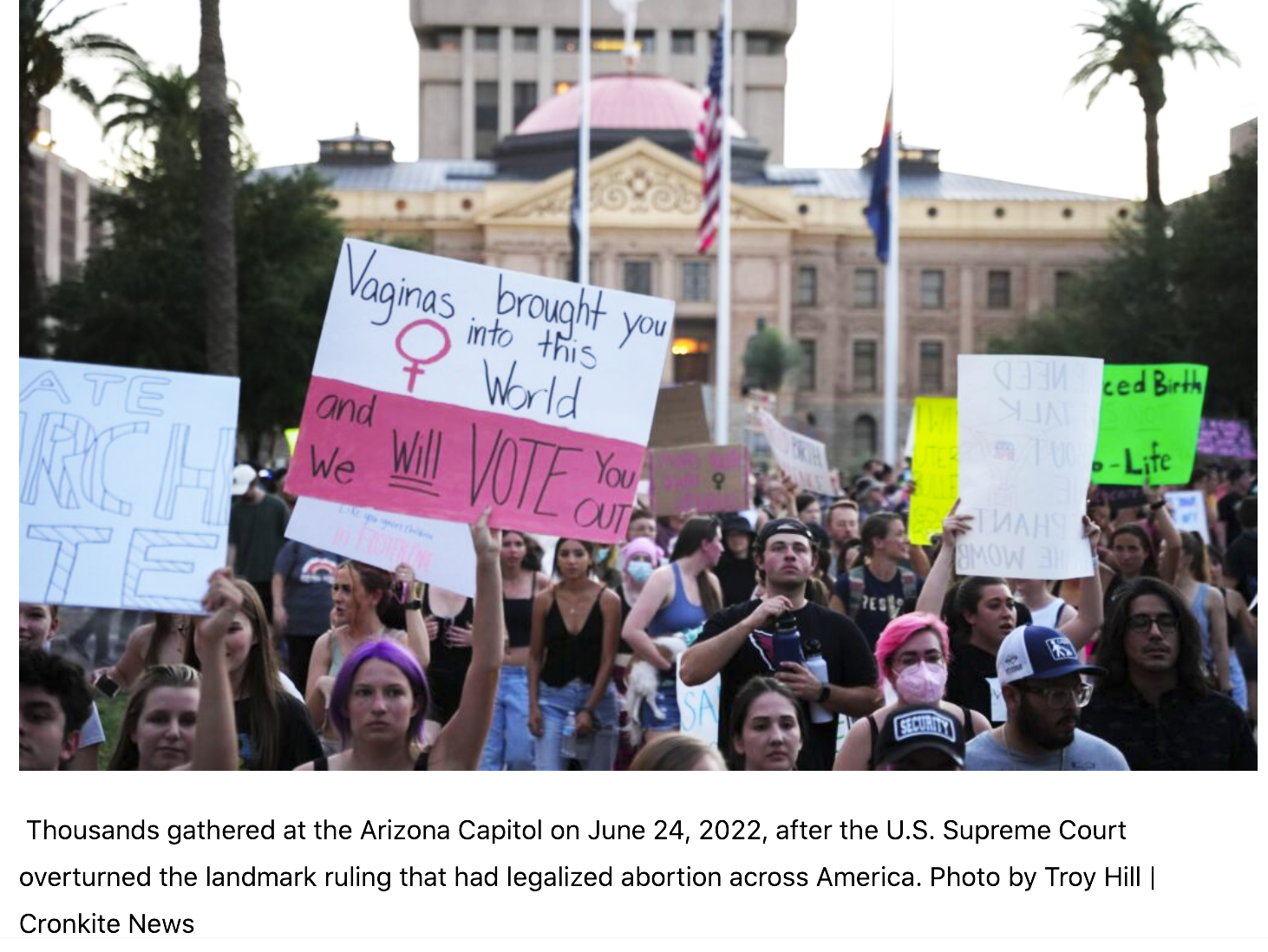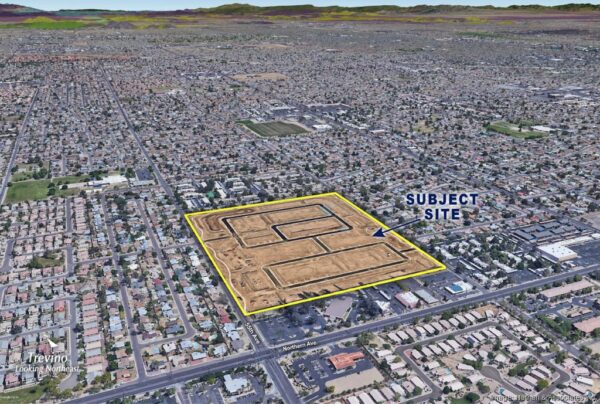BY: JIM SMALL -/ Arizona Mirror
Thousands gathered at the Arizona Capitol on June 24, 2022, after the U.S. Supreme Court overturned the landmark ruling that had legalized abortion across America. Photo by Troy Hill | Cronkite News
Arizona, like most other states, closely tracks abortions in a way that isn’t done for many other medical procedures and publishes annual reports that allow the state and public to see a variety of statistics about abortions.
From those annual reports, we can see what abortion access in Arizona looks like: Who is getting the procedure, how, when, where and, in some cases, why.
Since 2000, abortions have become more common in the Grand Canyon State. After hitting a low point of 8,226 abortions for Arizona women in 2001, abortions jumped to 12,301 in 2004 before a five-year run where fewer than 11,000 women received abortions.
But as the Great Recession set in, abortion numbers began to climb. In 2010, there were 11,059 abortions, and more than 13,000 each year for the next three years. There haven’t been fewer than 12,300 abortions since, and there were more than 13,000 for three of the last five years: 2016, 2019 and 2020. (The most recent data is from 2020, and state health officials say they expect to publish data for 2021 by the end of this year.)
At the same time the number of abortions were rising, the birth rate in Arizona was sharply declining. The result is that the abortion ratio — the number of abortions per 1,000 live births — in Arizona climbed sharply in the wake of the Great Recession and now sits at an all-time high of 172.
The ‘typical’ Arizona abortion
There is no typical abortion — just as with any other medical procedure, the patient’s health and many other factors can play a role. But we do know what the numbers say about who gets them, when, where and how.
The vast majority of abortions in Arizona are performed in the Phoenix area, though nearly one in seven is performed in Tucson.
The “typical” Arizonan who receives an abortion is a woman in her 20s — more than 58% are between 20 and 29.
She is not married — more than 85% are unmarried.
She’s likely to be Hispanic or Latina — almost 41% of abortions in 2020 were received by Hispanics or Latinas.
This is her first time getting an abortion — 65% of women have never had an abortion.
The pregnancy is new — 64% of the time, an abortion is sought for pregnancies less than nine weeks along.
She’s been pregnant before — less than 30% of the time, this is the woman’s first pregnancy.
She likely has children already — just 43% of women reported no previous live births, and 17% already have three or more kids.
There’s a nearly equal chance that clinician gives her a prescription for medication that will induce the abortion or that she has a surgical abortion, though she’s far more likely to receive medications if the pregnancy is less than 13 weeks.
She will not report any physical or mental health complications — just 17 women reported complications out of the 13,186 abortions performed in 2020.
The law does not require the state to gather any information about her education, income, poverty level or housing.
Abortions by age
While most abortion patients are in their 20s, a great many of them are not. Nearly three in ten patients are in their 30s. More than 9% are between 15 and 19 years old, another 3.5% are older than 40.
In 2020, there were 20 abortions performed on girls between the ages of 10 and 14 — an increase from the 15 that were performed on young children in 2019.
Reasons for abortion
About three-quarters of women tell their healthcare providers why they are receiving an abortion. Nearly 70% are elective. Other reasons given include maternal health, mental health, fetal health, domestic violence, sexual assault and poverty.
The law also requires healthcare providers to report whether the 24-hour waiting period was skipped because of a medical emergency that compels an immediate abortion. In 2020, that never happened.
There is no demographic for whom a pregnancy is most likely to cause serious, life-threatening complications. Those can happen to anyone.
But one of the major risk factors for dangerous complications in pregnancy is a history of complications.
National data show that nearly 10% of pregnancies cause blood-pressure-related disorders, including a disorder that results in seizures and can kill the mother. The only way to treat that disorder is to deliver the fetus — whether or not the fetus has developed enough to survive.
The risk of complications in a pregnancy is never zero, but it does increase with a mother’s age. Some of those complications are resolved or prevented by abortion.












